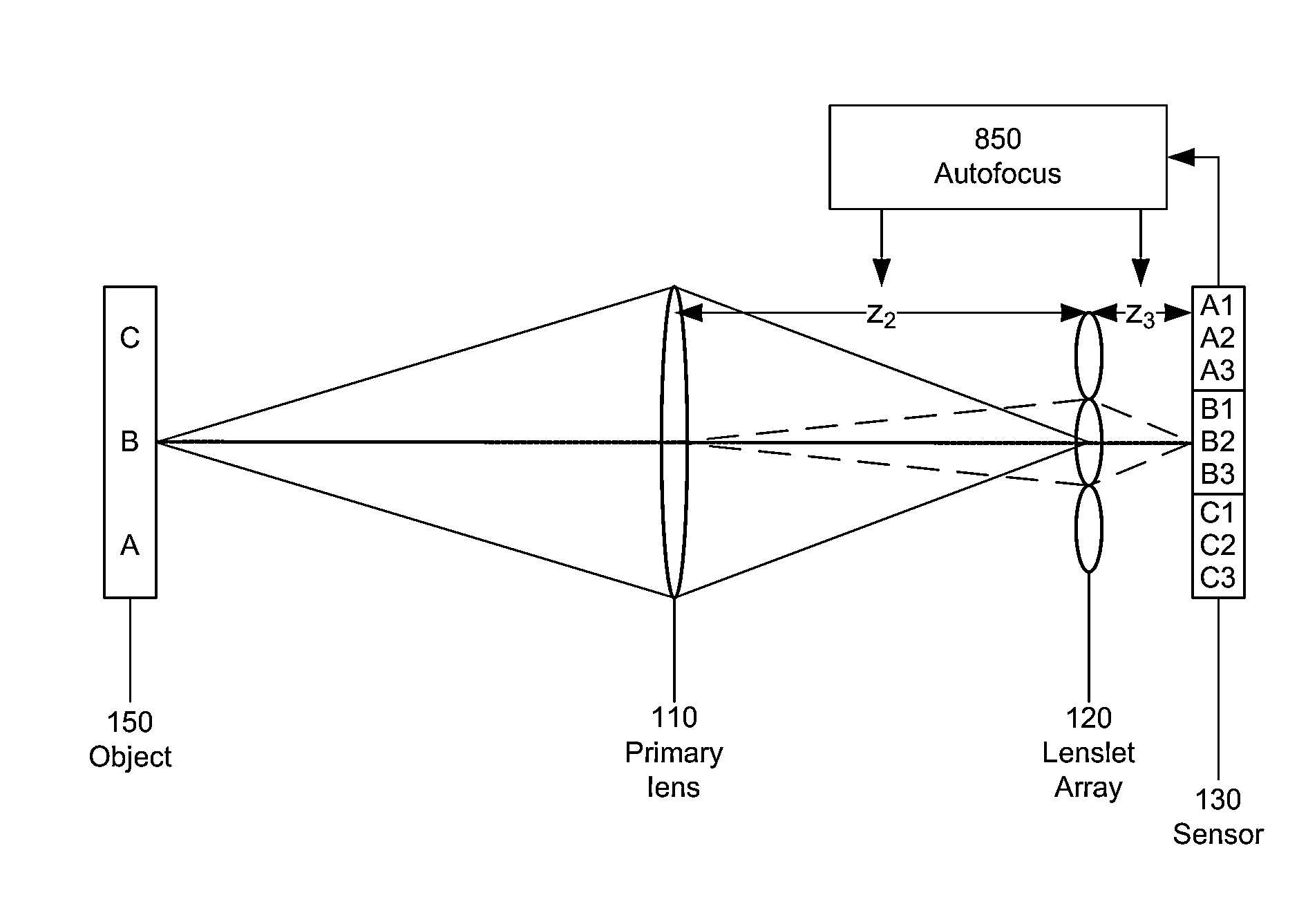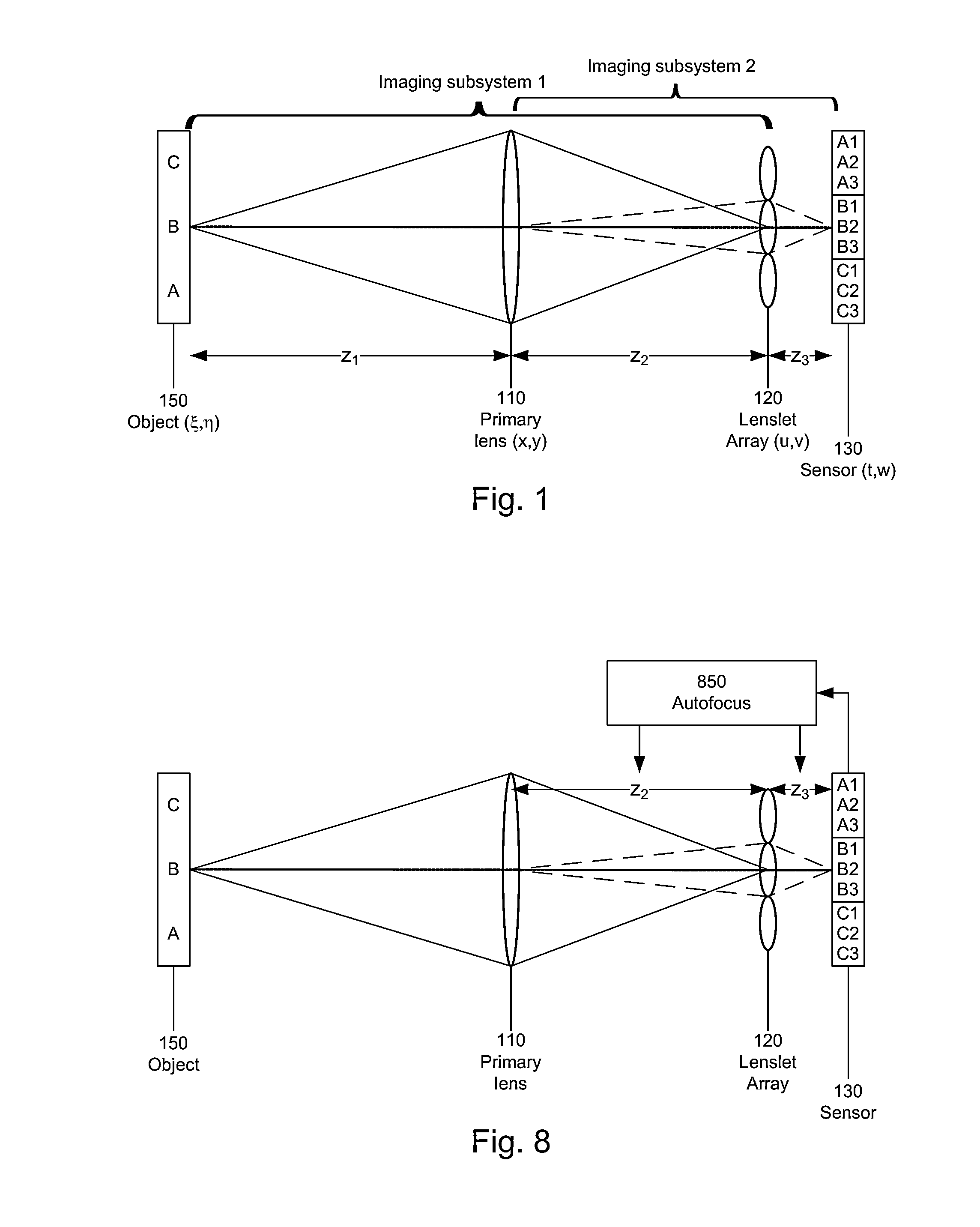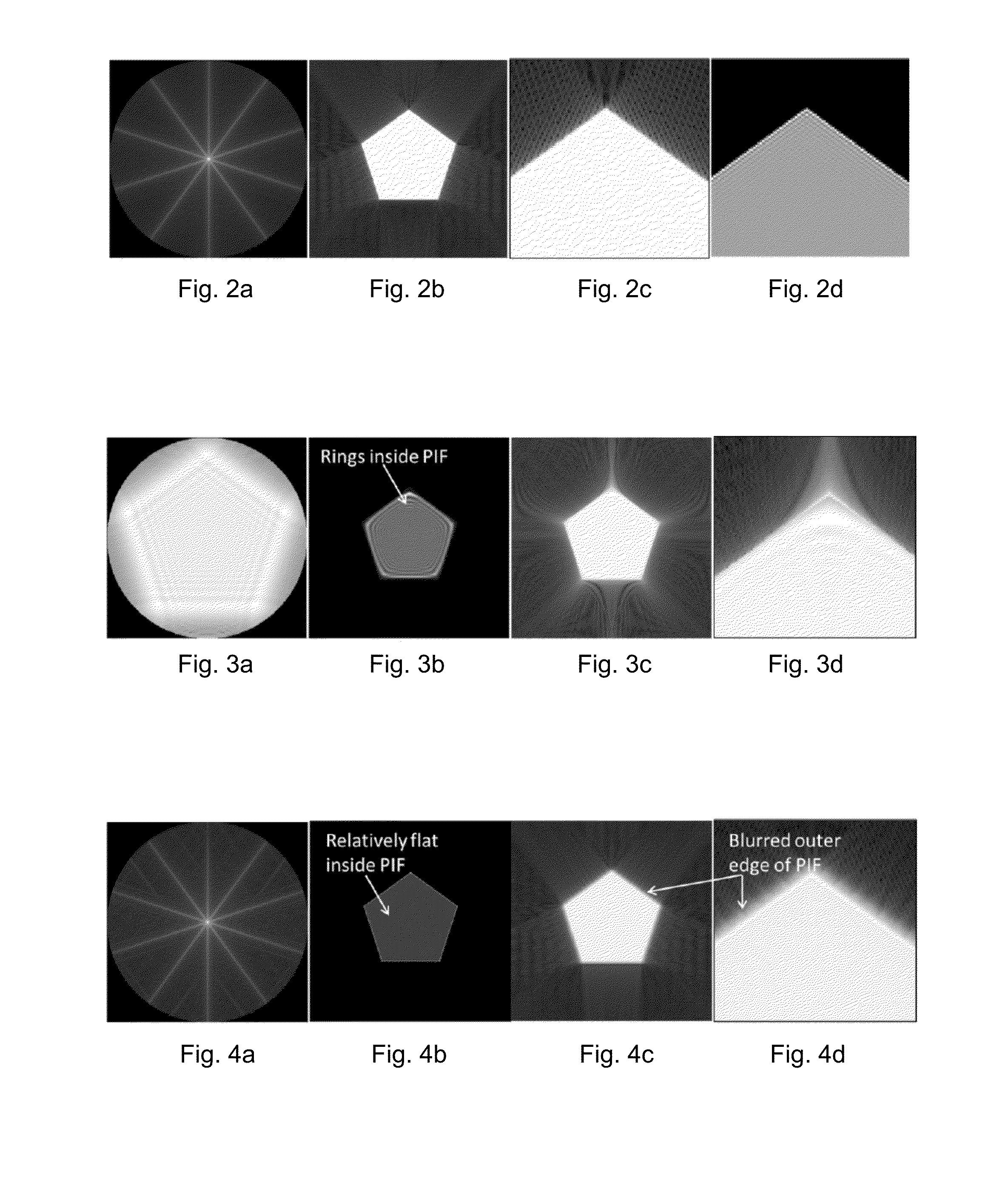Focusing and focus metrics for a plenoptic imaging system
a plenoptic imaging and focus metric technology, applied in the field can solve the problems of limited literature on the optical design of plenoptic imaging systems that go beyond geometric optics considerations, and little literature explaining how to design, manufacture or assemble plenoptic imaging systems, and achieve the effect of reducing the blur in the pupil imag
- Summary
- Abstract
- Description
- Claims
- Application Information
AI Technical Summary
Benefits of technology
Problems solved by technology
Method used
Image
Examples
example automated
[0068 Alignment
[0069]FIG. 5 is a flow diagram for aligning a plenoptic imaging system, based on the principles described above. In this example, it is assumed that the object is at an unknown object distance z1, so that it is not possible to accurately calculate z2 and z3. Instead, z2 and z3 are adjusted as follows. As an initial setting, z3 is set 510 to f2. Then z2 is adjusted 520 based on increasing the high frequency content in the plenoptic image captured by the sensor array. Then z3 is adjusted 530 based on reducing blur in the PIF. Steps 520 and 530 may be iterated, or interchanged. Alternately, z2 and z3 may be adjusted simultaneously based on a metric that accounts for both the high frequency and blur characteristics. More details are given below, using the example plenoptic imaging system introduced previously.
[0070]In step 510, the sensor array is moved to the back focal plane of the lenslet array, i.e. z3=f2=5 mm. This can be done experimentally using collimated light an...
PUM
 Login to View More
Login to View More Abstract
Description
Claims
Application Information
 Login to View More
Login to View More - R&D
- Intellectual Property
- Life Sciences
- Materials
- Tech Scout
- Unparalleled Data Quality
- Higher Quality Content
- 60% Fewer Hallucinations
Browse by: Latest US Patents, China's latest patents, Technical Efficacy Thesaurus, Application Domain, Technology Topic, Popular Technical Reports.
© 2025 PatSnap. All rights reserved.Legal|Privacy policy|Modern Slavery Act Transparency Statement|Sitemap|About US| Contact US: help@patsnap.com



